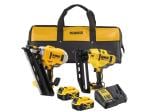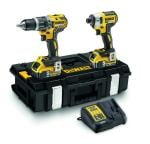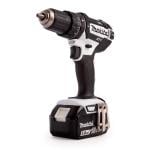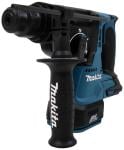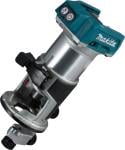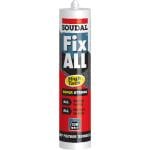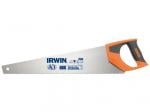A Buyers Guide To Dust Extractors
Are you looking to buy a dust extractor but you’ve no idea where to begin? Well, that is understandable given just how much there is to learn before rushing in. Unfortunately, it’s not just a simple case of a ‘dust extractor being a dust extractor’. There are many factors to consider, especially if you wish to purchase the perfect one to suit your needs.
In this article, we’re going to take you through the various considerations so that you can make an informed decision before rushing in.
Let’s begin!
Choosing the Best Dust Extractor for You
Do You Work with Concrete?
Are you working with concrete? If so, then this is an important consideration when looking for a dust extractor. The HSE dust regulations require that you have certain CFM ratings alongside your auto filter cleaning mechanism, and in some cases, you will require a HEPA filter. Safety first!
Even if you are only working with concrete on the odd occasion, you should purchase an HSE-compliant dust extractor to be on the safe side. These rules are in place for a reason; not to give us headaches, but to keep us healthy!
How Much Capacity Will I Need?
Your average portable dust extractor will run in the region of 8-14 gallons. Thus, if you don’t mind having to empty the dust extractor one a day or so, or you won’t be creating that much excess dust, then you can go for something smaller to offer greater mobility. Hat being said, larger extractors mean that you won’t have to go through as many collection bags which can be convenient too. Find the balance that suits your workstyle.
How Much Power Do You Need?
There is a wide range of CFM ratings and options for you to choose from when it comes to portable dust extractors. These measure the air volume that is pulled through the filter and into the vacuum.
The lower end will be around the 50 CFM region, whereas more powerful dust extractors will run around 150 CFM. If you want to go even higher, some twin turbine designs pull 300 CFM. Again, it all really depends on what you are doing and how much power you think you will need to keep up with the amount of dust that you are producing.
How Much "Water Lift" Do You Need? (Suction Power)
Water lift refers to the measure (or suction power) in a vacuum and is different from CFM. There are a variety of measurements that this can be converted into, such as mm HG, PSI, and more. A quick and easy Google search will enable you to convert these measurements easy enough into a unit that you understand.
Cordless units as expected, will be o the lower end of the scale with approximately 30" lift, whereas the larger dust extractors will offer up to 100". How much you need depends on your workstyle and the scale of projects you undertake.
What Additional Features Should I Look For?
Automatic Filter Cleaning
Auto filter cleaning is a handy feature, though it can’t be found on every single dust extractor. Dust extractors lose up to 7.5% of their performance once collecting dust begins and you can lose even more without this helpful feature. Thus, we would recommend seeking out dust extractors with this feature as standard for the additional boost in performance.
HEPA Filter
A HEPA filter can trap 99.97% of the particles that are 0.3 microns or larger. These filters are so efficient in fact, that they are often used in medical environments, which stands testament to their reliability. The question is, do you really need that level of filtration? Again, this comes down to your application so seek this feature out if you think it will be useful to you. Or better yet, get it anyway as it is certainly a nice feature to have whether it is paramount or not.
Auto Tool Activation
Auto tool activation is the type of feature that you will find on most pro-level dust extractors. That said, the amount of power that you can pull through it varies, so not all auto-tool activation features are created equal.
Auto tool activation allows you to power other tools, through your dust extractor, which can be handy, however, it is not an essentiality, and most don’t offer nearly enough amp to power a table saw. Having the greater potential is great but using separate powers sources for any tool greater than 6 or 7 amps is advised.
Variable Power Dial
A variable power dial is a feature that can be found on some dust extractors which is ideal for using alongside auto tool activation. That said, if you are working with a standard extractor with an amp total of 12, and you wish to add a 5-amp tool, then you will be forced to power your extractor down to 7 amps which of course, limits the dust extraction.
Do You Need Wet/Dry Vac Ability?
Pro-level dust extractors will carry a wet/dry vacuum rating. Another great feature that you can expect to find is the sensor that will automatically shut the unit off before any liquid reaches the motor inside. We would advise seeking out a dust extractor with this feature as it is always incredibly handy to have in the occasional emergency; you don’t want to end up breaking your dust extractor by accident.
Conclusion
We hope that this has been helpful for you and that now you have a clearer idea as to what features you will want in your dust extractor. Just make sure that you read the features carefully when browsing through the various options available. You need to ensure that you have everything that you will need to work effectively before parting with your cash.


